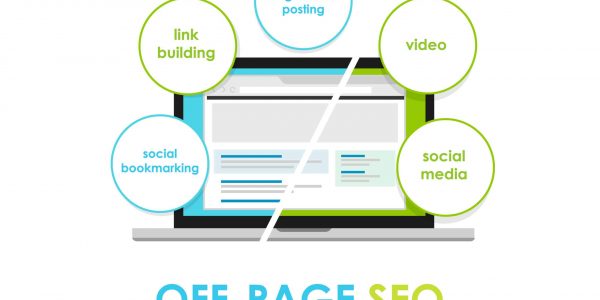Web design has come a long way since the early days of the Internet. What started as simple, static web pages has evolved into complex, interactive websites and applications that serve many purposes.
With this evolution, the demands on web designers and developers have grown exponentially. Fortunately, artificial intelligence (AI) has emerged as a powerful tool to revolutionize web design, making the process more efficient, accessible, and innovative.
A Brief History of Web Design
Before delving into AI’s role in web design, let’s take a moment to understand how web design has evolved over the years. This historical perspective will help us appreciate the profound impact that AI is having on the field.
1. Static Web Pages
The earliest websites were static, consisting of simple HTML pages with basic text and images. Designing these websites primarily involved arranging elements on a page and creating links between them. It was a straightforward process that didn’t require extensive coding skills.
2. Dynamic Web Applications
As the internet matured, web applications became more dynamic and interactive. Designers had to master HTML, CSS, JavaScript, and server-side technologies to create feature-rich websites that responded to user interactions. This transition marked the beginning of a more complex era in web design.
3. Responsive Websites
The advent of mobile devices brought new challenges. Websites needed to be responsive, adapting seamlessly to various screen sizes and orientations. This required designers to adopt fluid layouts and flexible design principles, adding another layer of complexity to their work.
4. User Experience Focus
User experience (UX) became a central focus, with designers optimizing layouts, navigation, and performance to ensure a seamless and enjoyable user journey. Crafting intuitive interfaces and reducing load times became crucial elements of web design.
The Role of AI in Modern Web Design
With web design becoming increasingly complex and multifaceted, the integration of AI has been a game-changer. AI technologies have transformed various aspects of web design, from user data analysis to automated content generation. However, one of AI’s most significant and transformative applications in web design is its role in expediting the coding process.
1. Code Generation
Writing clean, efficient code is one of the most formidable challenges in web development. Traditionally, developers have had to painstakingly craft HTML, CSS, JavaScript, and other code by hand. This process is not only time-consuming but also prone to errors.
a. Auto-generating HTML and CSS
AI-driven tools can analyze a website’s design and automatically generate HTML and CSS code to match it. This reduces the need for manual coding, making the design-to-development workflow much more efficient. These AI-generated codes are often cleaner and more consistent than human-written code.
b. Dynamic Code Generation
AI can also generate dynamic code snippets that adapt to different devices and screen sizes, ensuring a consistent and responsive user experience. This is particularly valuable for responsive web design, where layouts and content must adjust seamlessly across a wide range of devices.
2. Automated Testing
In addition to code generation, AI can help identify and fix code issues by automatically running tests and flagging errors. This ensures that websites are free of bugs and glitches, improving overall quality and reliability. Automated testing saves time and enhances the user experience by delivering a polished product.
3. Predictive Maintenance
AI-driven predictive maintenance tools can analyze a website’s codebase and predict potential issues before they cause problems. This proactive approach saves time and resources by preventing downtime and costly emergency fixes. It also ensures that websites are continuously performing at their best.
4. Natural Language Processing (NLP)
Natural Language Processing is a branch of AI that allows machines to understand and generate human language. In web design, NLP can be used to create content, such as product descriptions, blog posts, or even code comments, more quickly and efficiently. This expedites content creation and ensures that the content is engaging and relevant to the target audience.
5. Design Assistance
AI-powered design tools can suggest layout improvements, color schemes, and typography choices based on user preferences and industry standards. This not only accelerates the design process but also enhances the website’s overall quality. Designers can leverage AI’s insights to create visually appealing and user-friendly interfaces.
The Future of AI in Web Design
As AI technology advances, its role in web design will expand. The possibilities are vast, and the future promises even more profound transformations in the field. Here are some anticipated developments:
1. Enhanced Personalization
AI will enable even more sophisticated personalization, tailoring web experiences to individual users based on their behavior, preferences, and demographics. Websites will dynamically adapt content, layout, and features to provide a personalized journey for each visitor.
2. Voice and Image Recognition
AI-powered voice and image recognition will play a central role in web design. Voice interfaces and image-based interactions will become more prevalent, allowing for more intuitive user interactions and content generation. Websites will seamlessly integrate with voice assistants and offer advanced image search and recognition capabilities.
3. Greater Automation
Web design platforms will become increasingly automated, allowing non-technical users to create complex websites with minimal coding knowledge. AI-driven design assistants will guide users through the entire web design process, from concept to deployment. This democratization of web design will empower a broader audience to express their creativity online.
4. Improved Accessibility
AI will play a pivotal role in ensuring web accessibility by automatically generating code compliant with accessibility standards. Websites will be designed with inclusivity in mind, making them accessible to users with disabilities. AI-driven accessibility audits will identify and rectify potential accessibility issues, ensuring that all users can access online content seamlessly.
5. Advanced Content Generation
AI-powered content generation will become more sophisticated, producing high-quality articles, product descriptions, and marketing copy. This will expedite content creation and enable businesses to maintain a consistent online presence with fresh and engaging content.
Artificial Intelligence Is Transformational
The integration of AI in web design is transforming the industry at an unprecedented pace, making it more accessible, efficient, and innovative.
One of the most exciting aspects of AI’s role in web design is its ability to expedite code writing, simplifying the development process while maintaining high-quality standards. As AI technology continues to evolve, we can expect even more significant advancements that will shape the future of web design in ways we can only begin to imagine.
Embracing AI in web design is more than just a choice; staying competitive in an ever-evolving digital landscape is necessary. Whether you’re a seasoned web developer or someone with minimal coding knowledge, AI can empower you to create stunning, functional websites easily.
As we look to the future, the partnership between human creativity and AI innovation will undoubtedly lead to remarkable web experiences that benefit us all. The evolution of web design is far from over, and AI is at the forefront of this exciting journey into the digital future.







